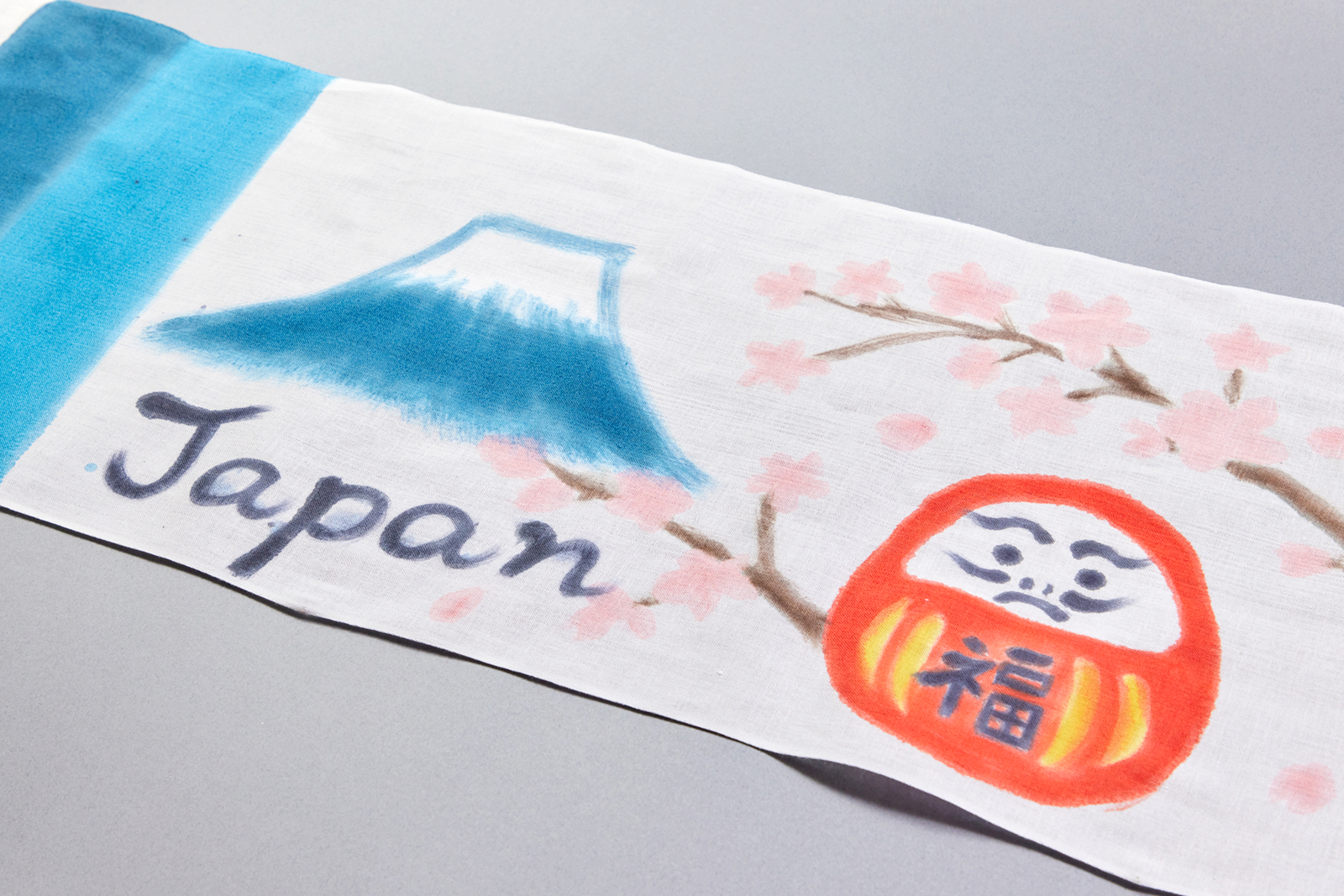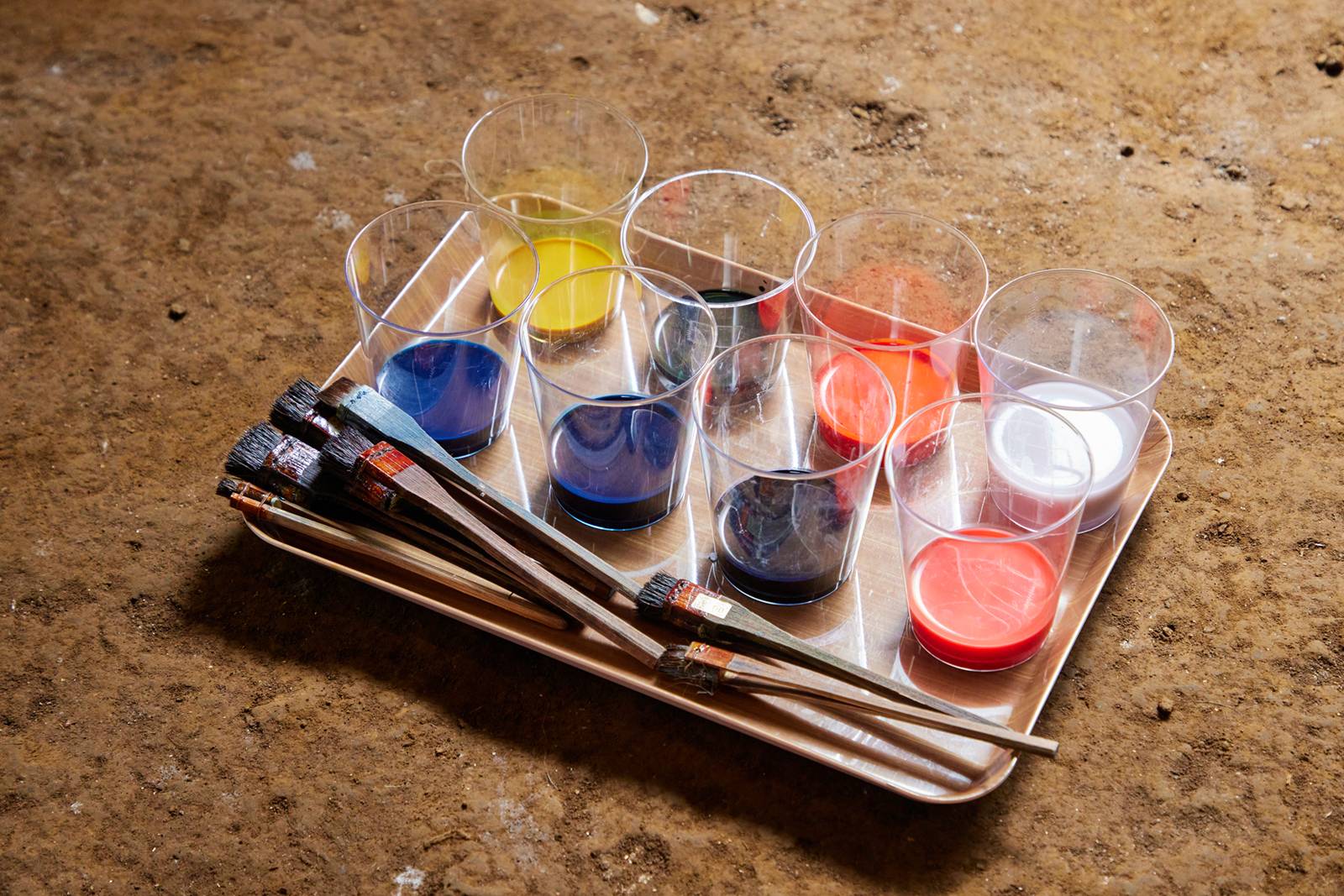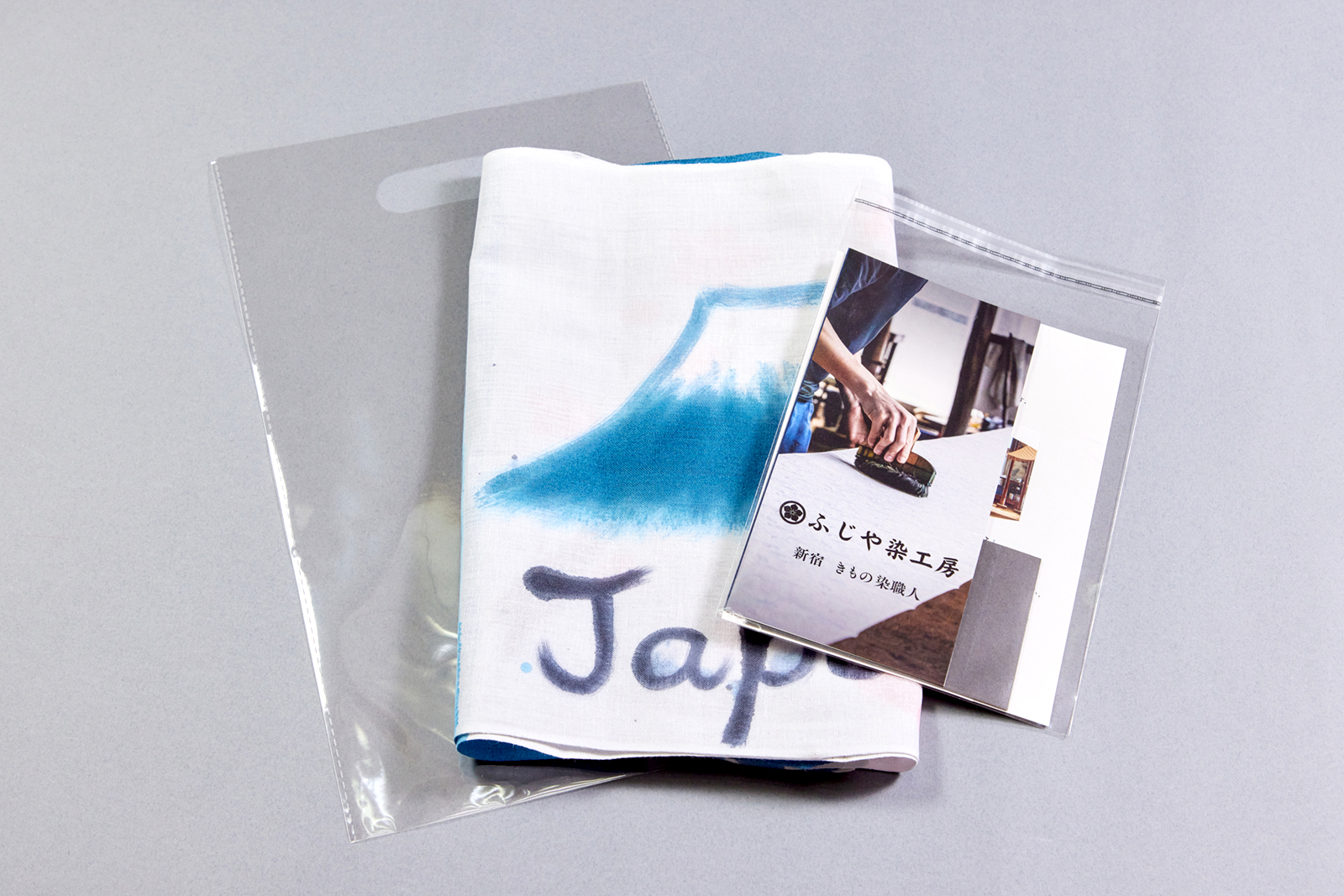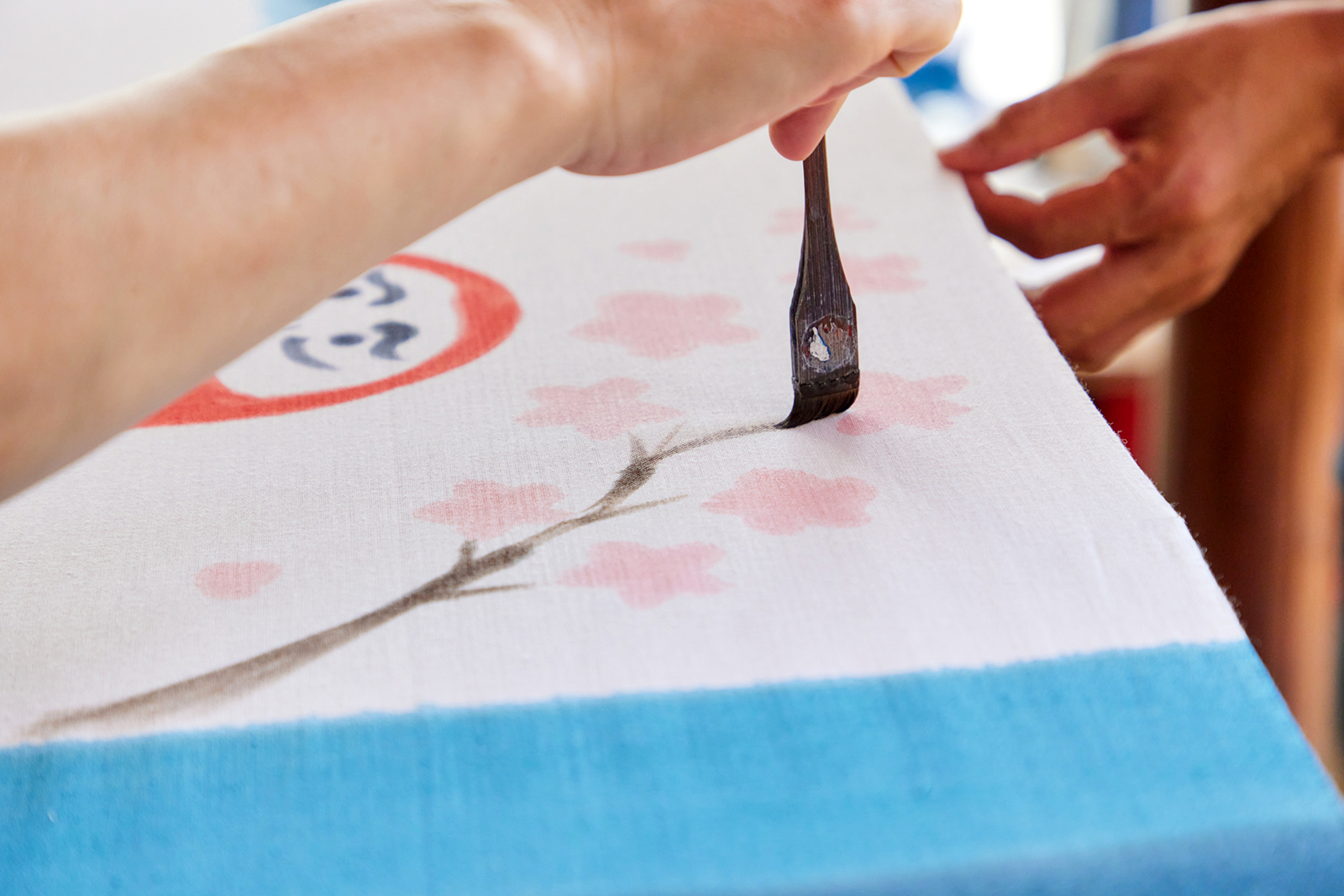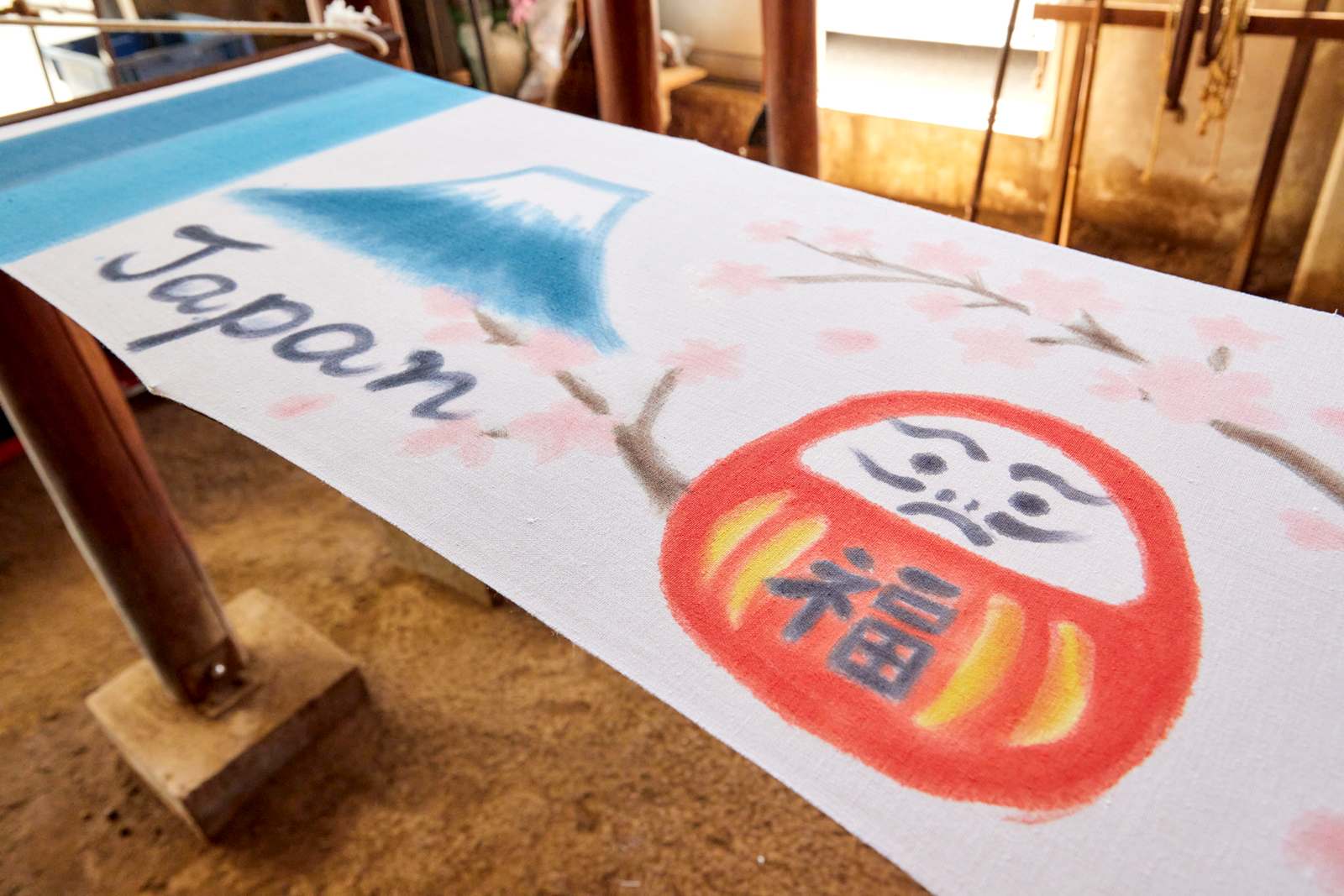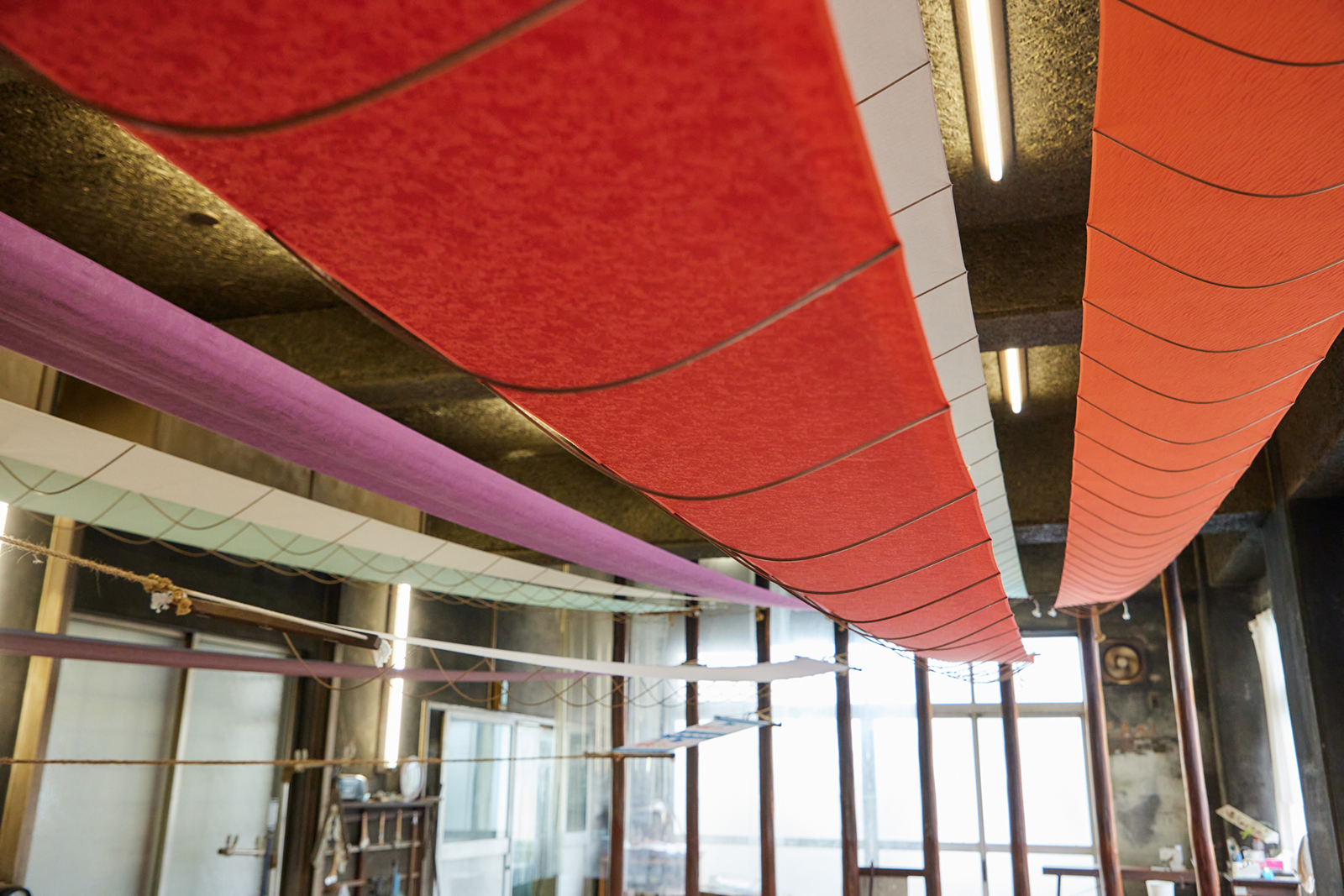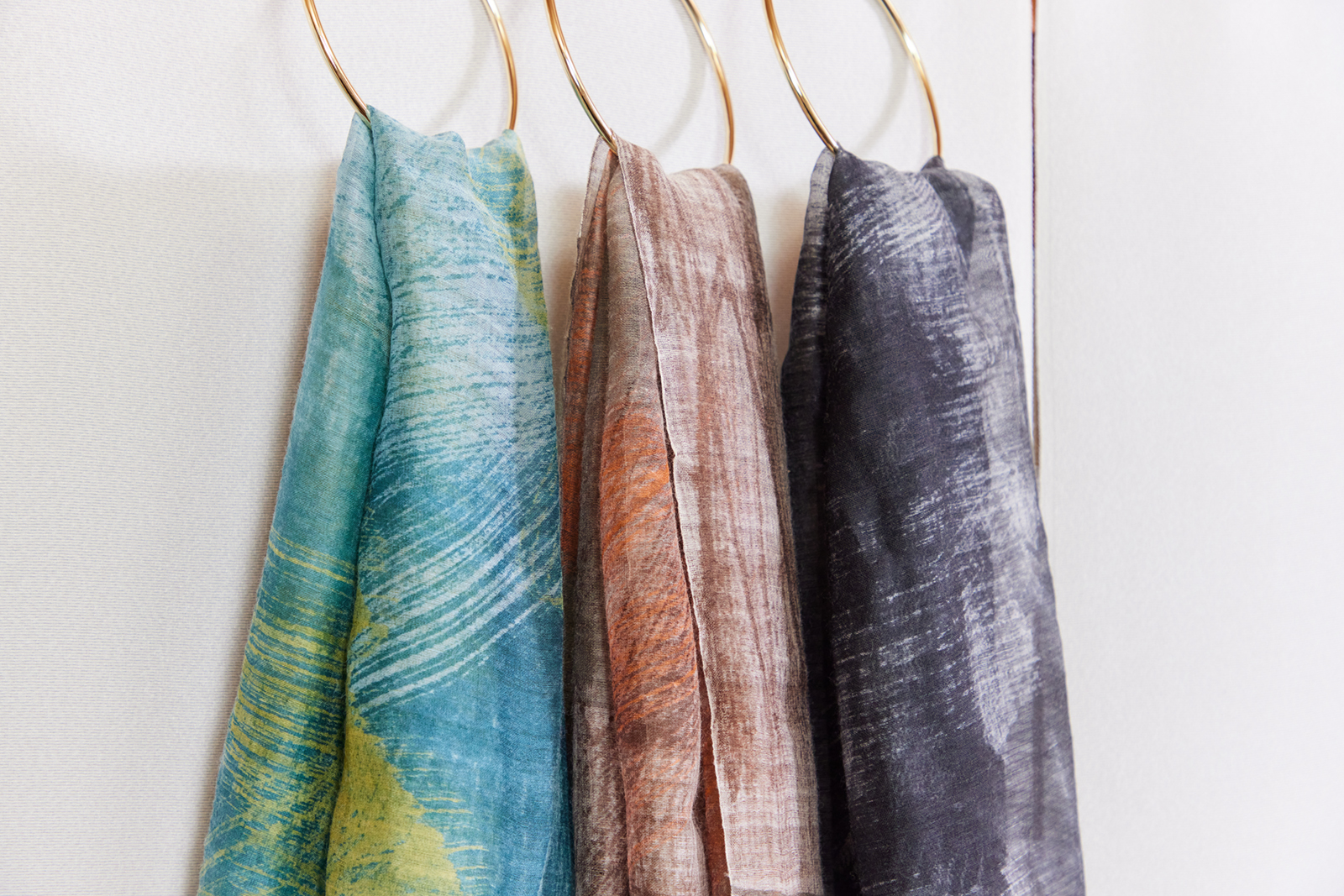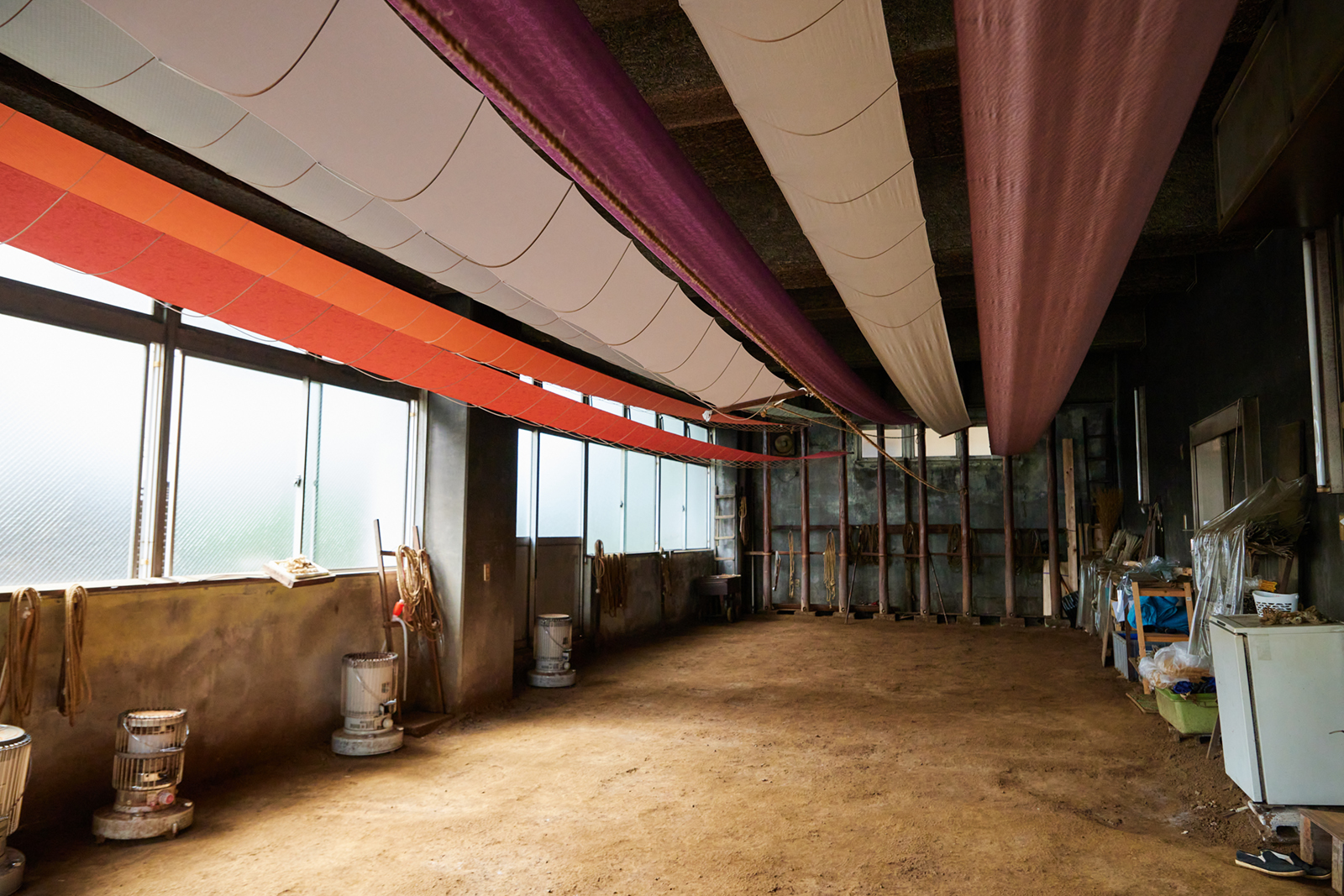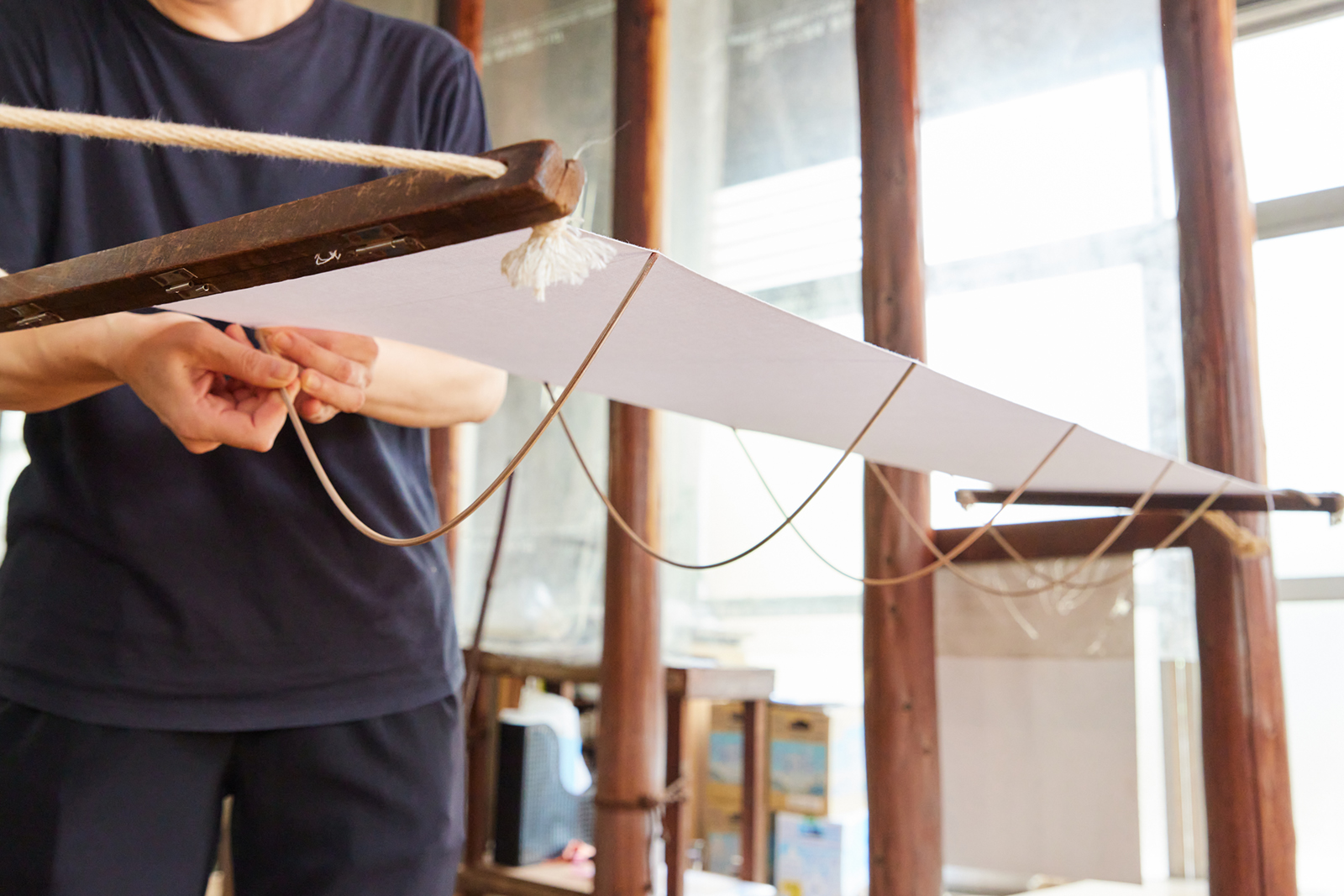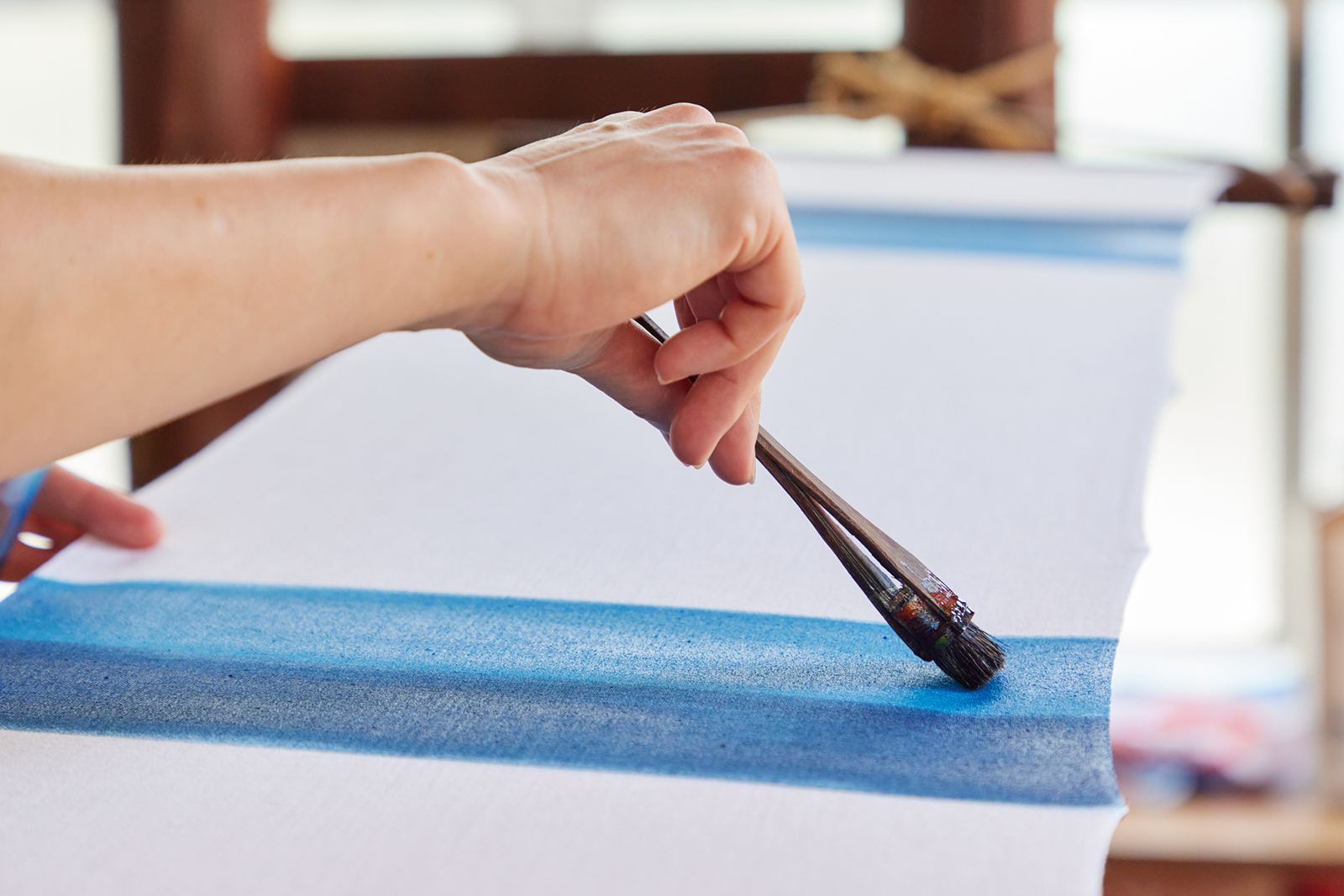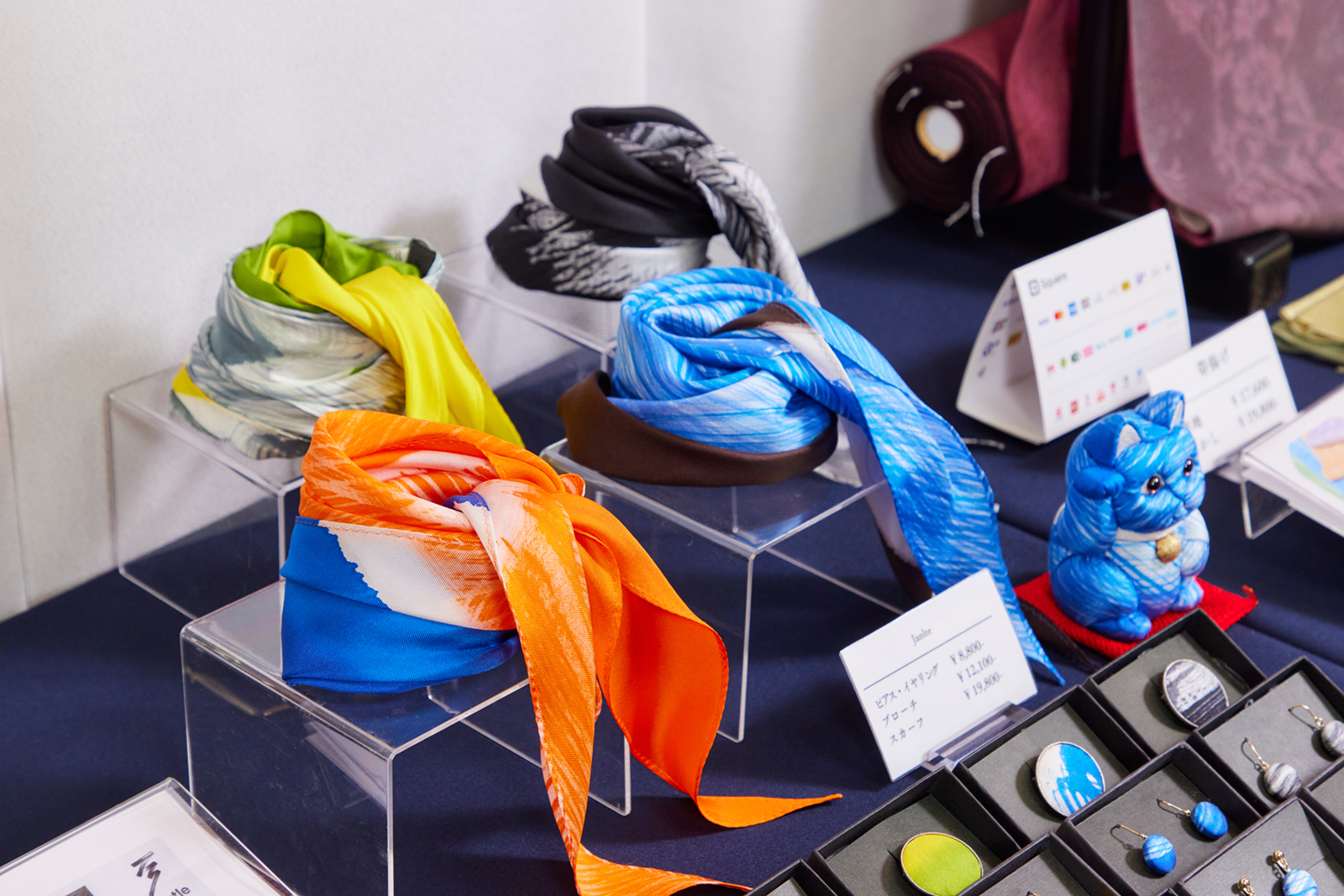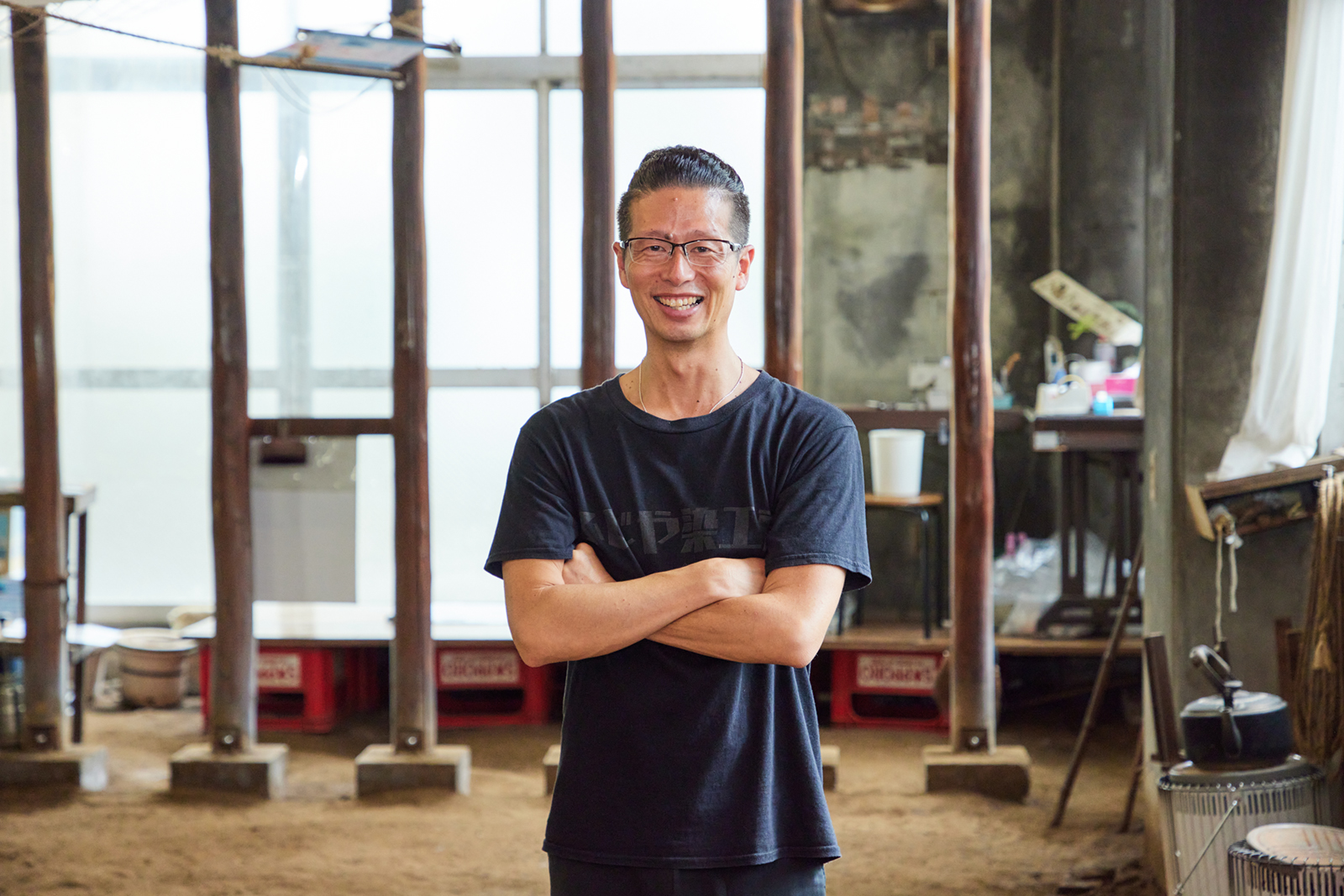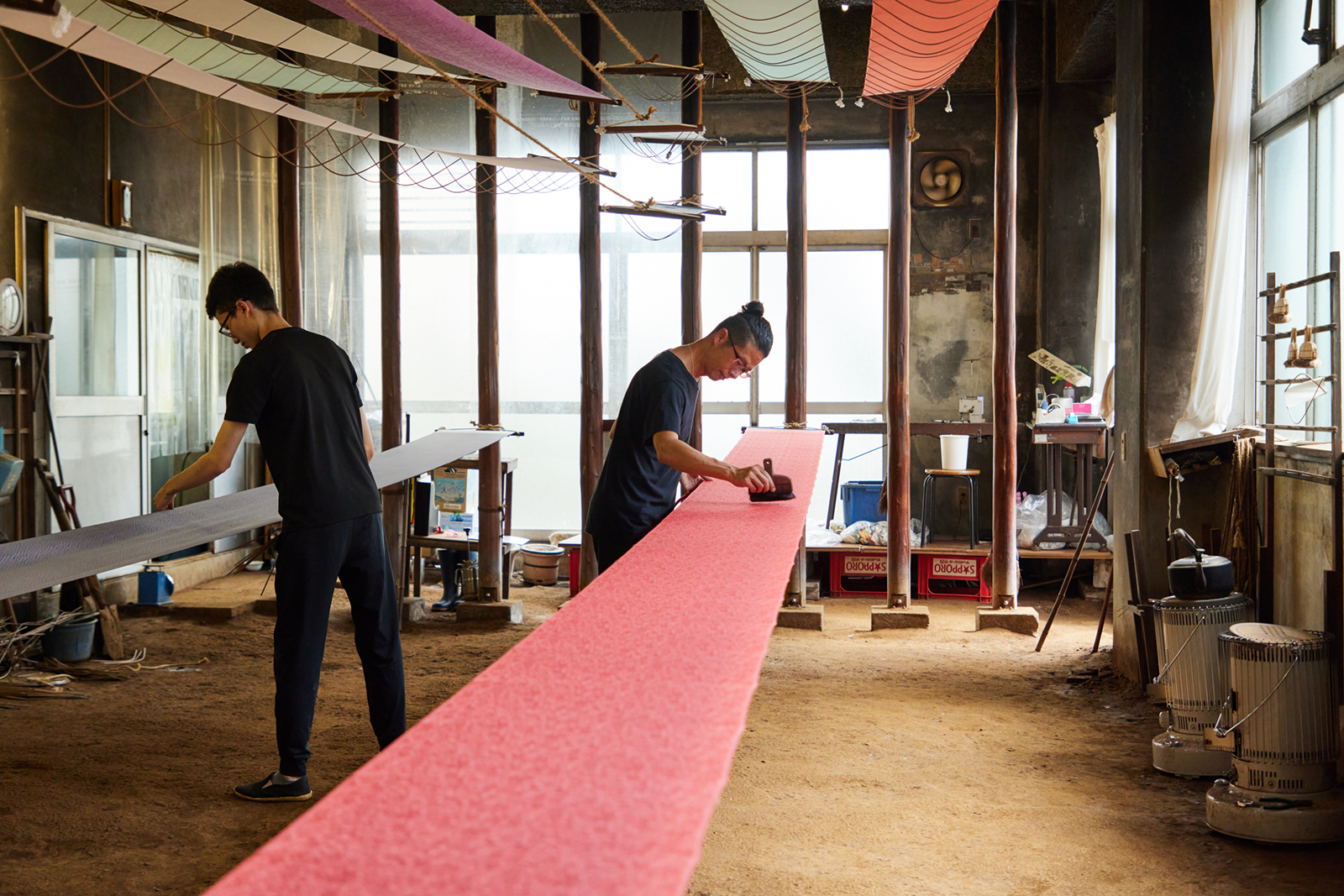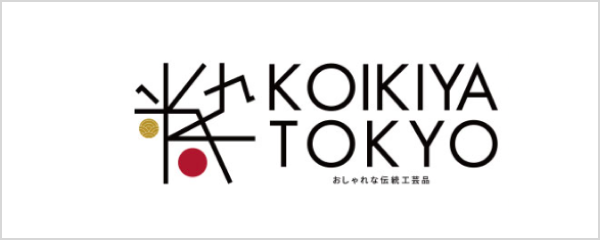A dyeing technique that flourished in the riverside neighborhood of Takadano-Baba
Dyeing played an essential role in the culture of Edo (pre-modern Tokyo), and dyehouses thrived throughout the Kanda River basin with its abundant water. As time went by, people kept searching further upstream for the clean water they needed, and the Takadano-Baba area became a hub for these workshops. Even today, several hundred years after the craft first flourished, the area remains a major center of dyeing in Tokyo.
Fujiya Sen-Kobo Dyeing Workshop was founded in 1952, just as Japan was beginning to recover from the Pacific War. The founder had evacuated to Nagano during the war, and on returning to Asakusa started a dyehouse focusing on the Hiki-Zome hand-brush method. With the second generation proprietor, the focus shifted to custom hand-dyed Tokyo-Yuzen items. In 2003, Mr. Takatoshi Nakamura became the third generation proprietor. From 2024, the company has expanded into men's fashion, even collaborating with famous brands.
Experience dyeing in an earthen floor setting, a tradition dating back to Japan’s feudal period
The experience begins with a talk from an artisan on the craft of dyeing. You may find yourself looking forward to the program as you hear about its long history in the area, the characteristics of the Hiki-Zome technique, and details about the works that are created with it.
The dyeing experience itself takes place in the same earthen-floored workshop where the artisans work. Fujiya Sen-Kobo Dyeing Workshop is the only one of its kind in Tokyo that has a floor space where 12-meter long pieces of fabric can be stretched out straight. The reason for working in a space with an earthen floor is that the humidity, which helps determine the quality of dyed goods, can be easily controlled. The intimate knowledge our predecessors had in developing spaces for the dyeing craft had may come as a surprise.
From there, you’ll be able to choose the design to be drawn on your Tenugui towel (traditional cloth). Popular Mt. Fuji, cherry blossom, and daruma doll designs are all available, and you can choose how many to add as well as their arrangement. Or, you might choose other motifs that remind you of your travels in Japan. Once you have decided on the design you would like to draw, the actual Hiki-Zome brush-dyeing part of the experience will finally begin.
Watch your design come to life through Hiki-Zome
Two tools are used to stretch out the fabric of Tenugui towels : Harite are cloth stretchers tied to the workshop’s pillars, and Shinshi are bamboo rods with needle-like tips. Onto this tightly stretched cloth, you’ll brush the dye with a special deer-hair brush.
The trick to skillful dyeing is to quickly "draw" the brush over the cloth without applying too much dye. In spots the dye will spread evenly, and in others where the brush stops it will blur. In this way, your own unique pattern will emerge on the Tenugui towel. These are the same techniques as artisans used during Japan’s feudal period. By the time you finish dyeing your piece of cloth, you will understand why the hikizome technique has historically been so well regarded.
Carrying tradition from the past to the present and into the future
As the dye from your work is drying over the heat of a kerosene stove heater, you can have a cup of tea and tour the showroom. Fujiya Sen-Kobo Dyeing Workshop’s "Jantle" brand was named by fusing the words "Japan" and "Gentle." The brand embodies the desire of Takatoshi, the third-generation proprietor, "transcend the boundaries of gender so that men can also enjoy dyed textile fashions."
He says that "Hiki-Zome dyeing, which was so popular with old Edo townspeople, is also meeting the demands of modern fashion. It’s not a matter of something being good just because it’s traditional. We need to keep creating things people will consider cool, and that will connect us to the future.” And now Takatoshi is passing his skills on to his son, Takuro. As you hold the Tenugui towel you craft during your experience here, you might think about how cool it is that such dyeing has been passed down from the past, to the present, and now into the future.
Founded in 1952 in Takadano-Baba, Shinjuku-ku. Its traditional Hiki-Zome brush-dyeing technique has been passed down through three generations of proprietors. The vivid expressiveness of the colors in their creations, tailored to each customer, is acclaimed both in Japan and internationally. In recent years, they have been exploring new possibilities for Hiko-Zome, including through launching collaborations with international brands.
